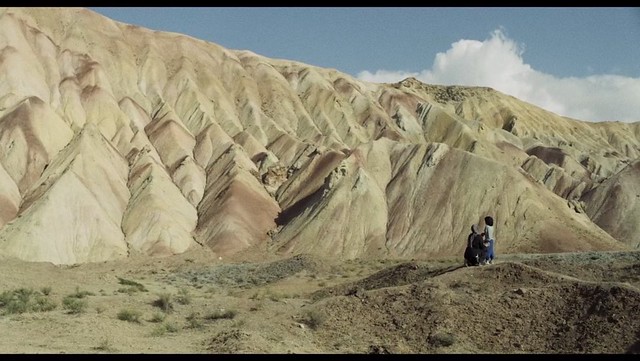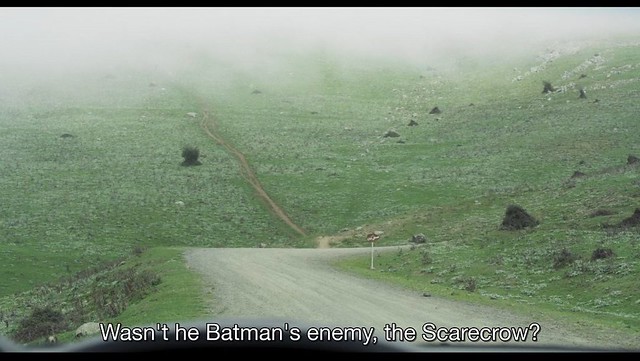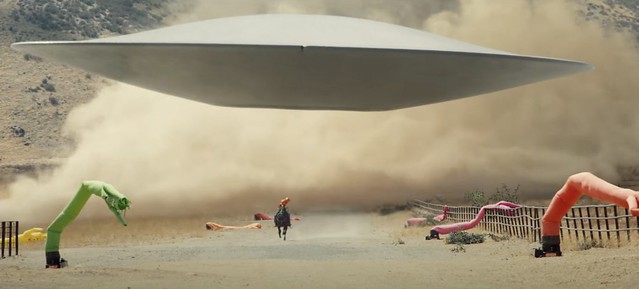Fire of Love (2022) - Dosa

Facing volcanos and their sudden eruptions can cause anyone into a deep existential crisis – is anything in life ever stable? What is human existence compared to the awesome power and magnitude of these cataclysimic natural events?
The first time I’ve seen the footage of mesmeric volcanic eruptions with unnaturally glowing bright red lava, captured by The Kraffts, Katia and Maurice, the famed volcanologist couple, was in Werner Herzog’s Fireball. Using long lenses with a 16mm camera, the Kraffts captured some of the most awe-inspiring, iconic volcanic eruptions ever recorded on film. Through that Herzog’s film, I learned that they lost their lives in 1991 when they were on the path of a deadly pyroclastic flow after the eruption of Mt. Unzen near Nagasaki, Japan.
Filmmaker Sara Dosa (The Seer and the Unseen), sifting through tons of film and TV footage, photos and books the volcanologist couple left behind, crafts a poignant narrative about two people who lived and died together doing what they loved. Fire of Love starts with the last known footage of Katia and Maurice together, at the foot of Mt. Unzen, the day before their death. Then it retraces back to how they met in Alsace region in Strasbourg, France.
Growing up in post-WWII with all the aftermath of destruction, both Katia and Maurice leaned toward nature early on, visiting volcanos of Italy –the Mts. Etna and Stromboli respectively. Both were drawn to volcanos and its awesome power. After their first meeting in 1966 and attending anti-Vietnam War demonstrations of 1968, they decided to dedicate their lives to studying volcanos, “because we were disappointed with humanity. And since a volcano is greater than man, we felt this is what we need. Something beyond human understanding.” Maurice was the wanderer with his film camera, trying to capture everything and Katia, sharing the same passion, trying not to lose sight of him. Not that they had a deathwish, both preferred intense and short life rather than long and monotonous one.
So, they married in 1970 and the Geologist/Geochemist volcanologist couple was formed. They traveled everywhere volcanic eruptions were about to happen through the network of fellow scientists and ran straight to the calderas to study and archive, with Maurice’s trusty Arri SR 16mm camera and Katia’s still cameras. For them, studying volcanos is the science of observation. The closer you get, the more you see. And the images they captured were out of this world. And we see plenty of jaw-dropping images in Fire of Love, all culled from the Krafft archive- hundreds of film rolls. Their ‘freelance’ profession took them to Italy, Congo, Iceland, Indonesia, Washington State, Colombia, Japan… to all continents except Antarctica.
Since most of the footage was shot on film without accompanying sound recorder, Dosa and her team do a fantastic job in sound design – explosions, bubbling lava, lava flows, rocks falling, gaseous rolling clouds. And lyrical stop-motion animation illustrates the couple’s early encounters as well as many cataclysmic eruptions throughout human history.
The film is narrated by filmmaker/artist Miranda July, who came onboard after seeing Dosa’s first cut and deeply moved by what she saw: their passion, curiosity, and sense of awe toward nature- all things she as an artist could relate to. Her voice quivers at times as she is choked with emotions. July’s vulnerable delivery adds greatly to the love story narrative.
Volcanic eruptions were everything for them: as Katia describes as ‘feeling of being nothing’ in front of them. To keep chasing volcanos to the far sides of the world, they had to keep making appearances on TV, write books and give interviews and lectures. They definitely took advantage of being the only volcanologist couple in the world in their matching Jacques Cousteau-style red beanies.
The relatively safe ‘red’ volcanos that gave them otherworldly images of lava spewing and flowing gave way to studying more dangerous and unpredictable ‘grey’ volcanos in their later years, which ultimately killed them.
They knew the danger of these unpredictable, deadly eruptions. It was Nevado del Ruiz eruptions in Colombia in 1985 that killed estimated 25,000 that the Kraffts questioned their purpose in life. And they worked hard to create a warning system for evacuations which they are in place across the world now.
It is hard to find someone to spend our lives with, let alone to find one who shares the same passion. Armed with explosive materials accompanied by lyrical collages, Dosa accentuates the story of two lovers who shared the same passion and lived and died together. Fire of Love is an ultimate love story for the ages, presented in a spectacular manner. See it on big screen.
Fire of Love is distributed by NatGeo, opens in theaters in NY and LA and national rollout to follow.









 A family, mom (Pantea Panahiha), dad (Hasan Majuni), older son (Amin Simia), younger son (Rayan Sarlak) and sick dog are on the road in a borrowed SUV, in a picturesque Iranian countryside. Yet this is not a joyous family vacation. Something is up. Mom is overly paranoid thinking that they are being followed. Dad with one leg in a cast changes the phone's SIM card every so often. They do so while dealing with their hyperactive 8 year-old son who is just a bundle of energy and joy. The older son, whose been driving, rarely says a word. He is moody as he chastizes his doddering mom that he is not a child anymore.
A family, mom (Pantea Panahiha), dad (Hasan Majuni), older son (Amin Simia), younger son (Rayan Sarlak) and sick dog are on the road in a borrowed SUV, in a picturesque Iranian countryside. Yet this is not a joyous family vacation. Something is up. Mom is overly paranoid thinking that they are being followed. Dad with one leg in a cast changes the phone's SIM card every so often. They do so while dealing with their hyperactive 8 year-old son who is just a bundle of energy and joy. The older son, whose been driving, rarely says a word. He is moody as he chastizes his doddering mom that he is not a child anymore.


